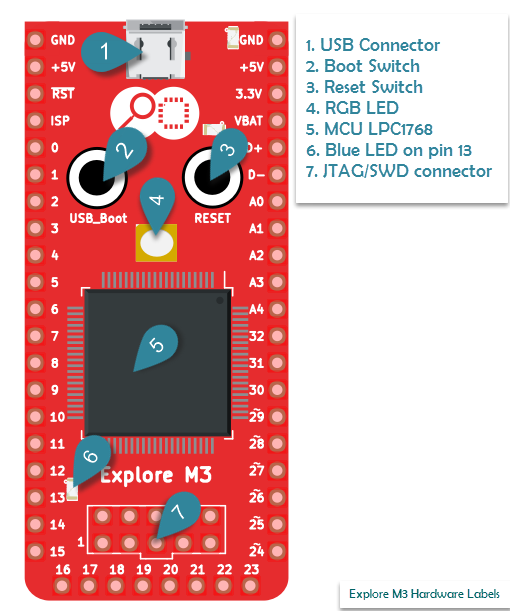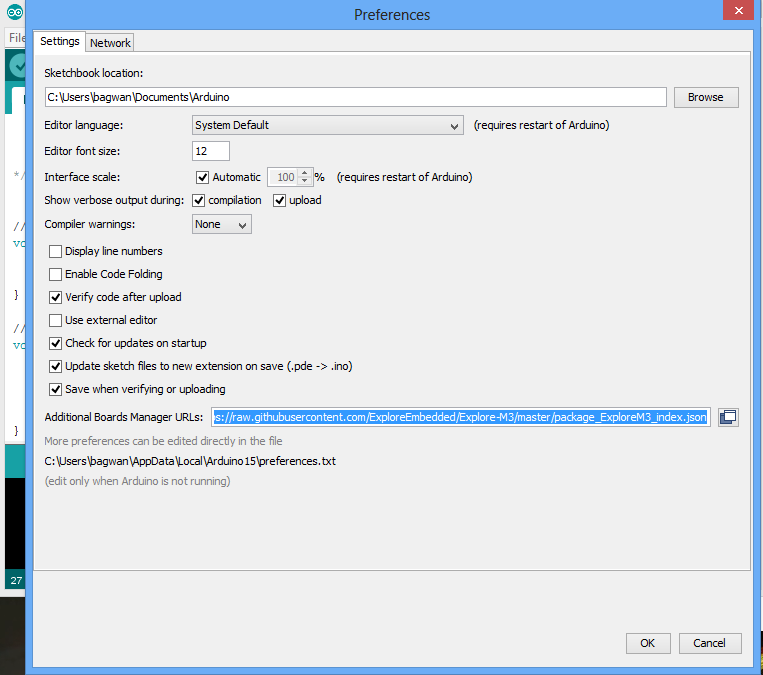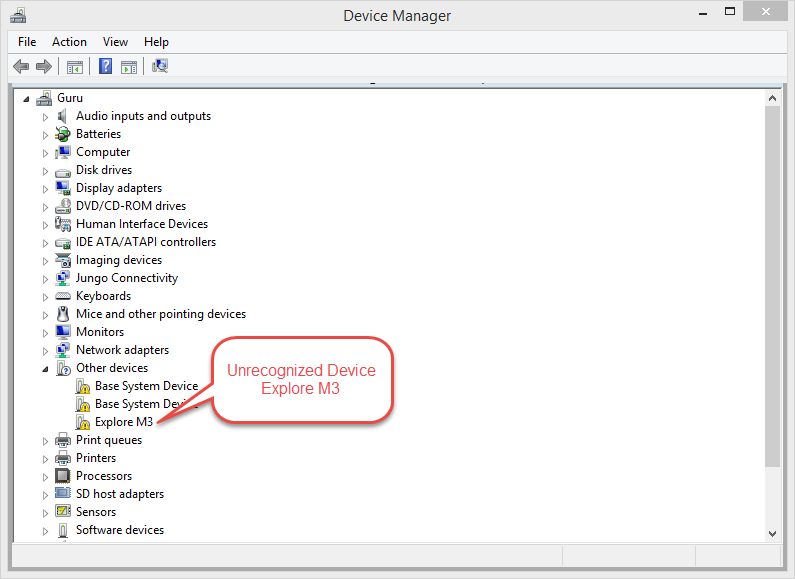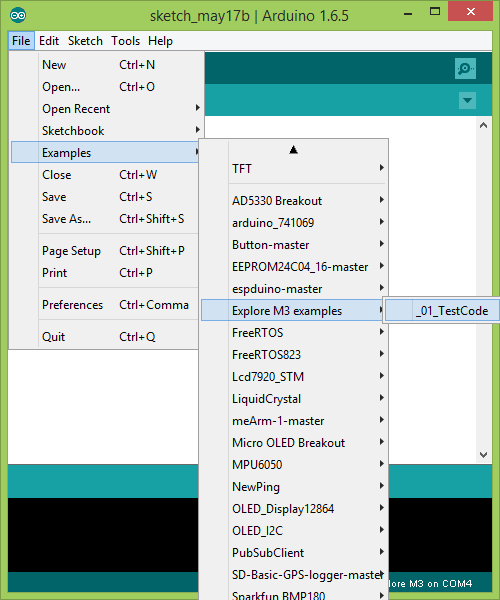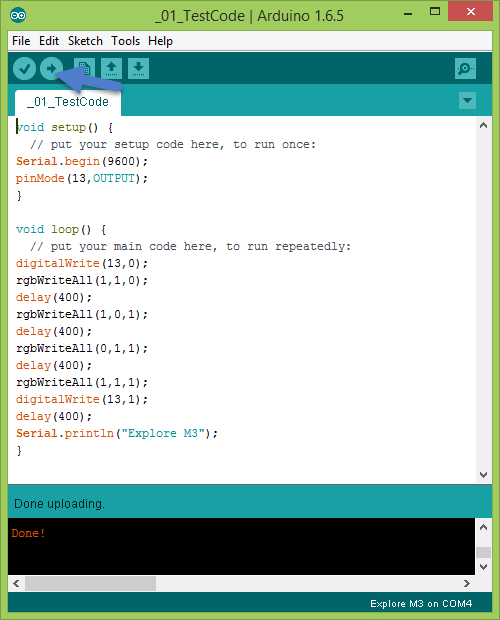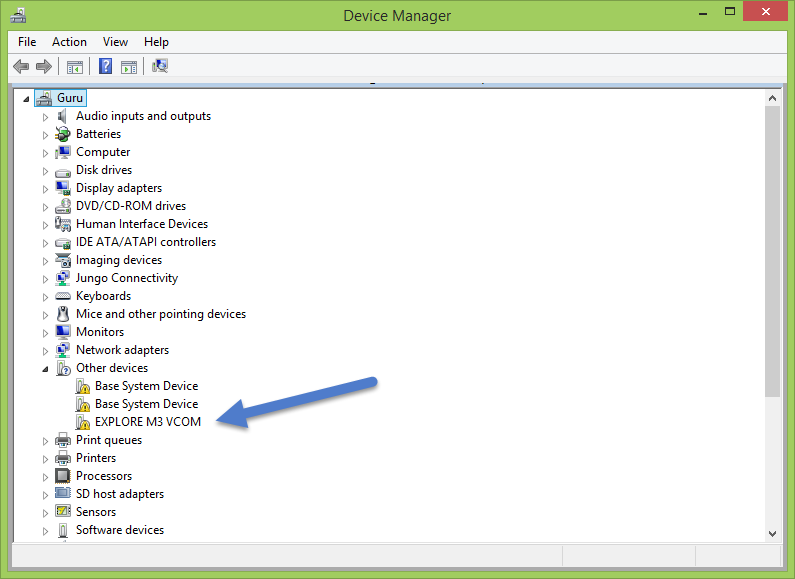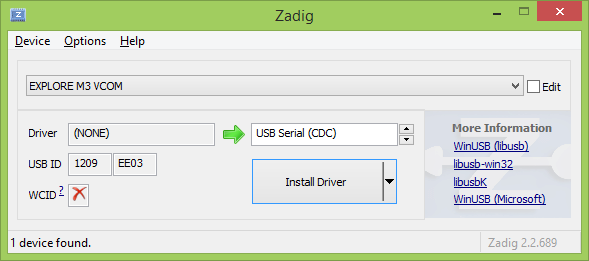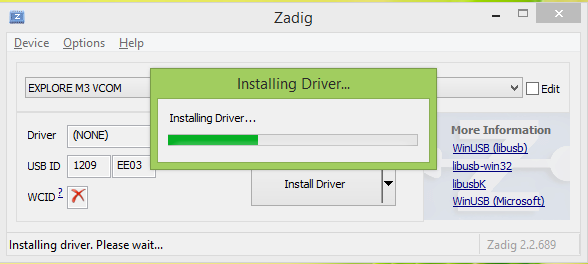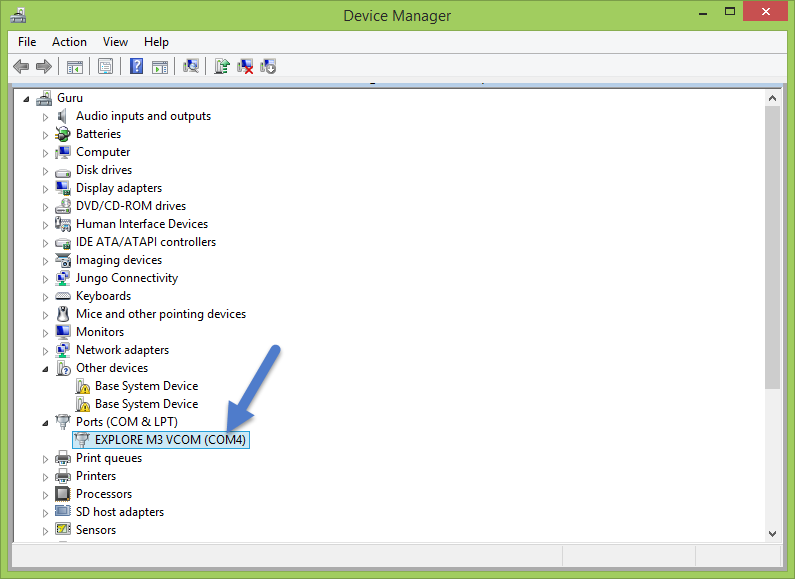This guide is for beta testers only. The guide will be much simpler for the end user. If you are a beta tester please send an email to support@exploreembedded.com with your github userid to gain access to the test code.
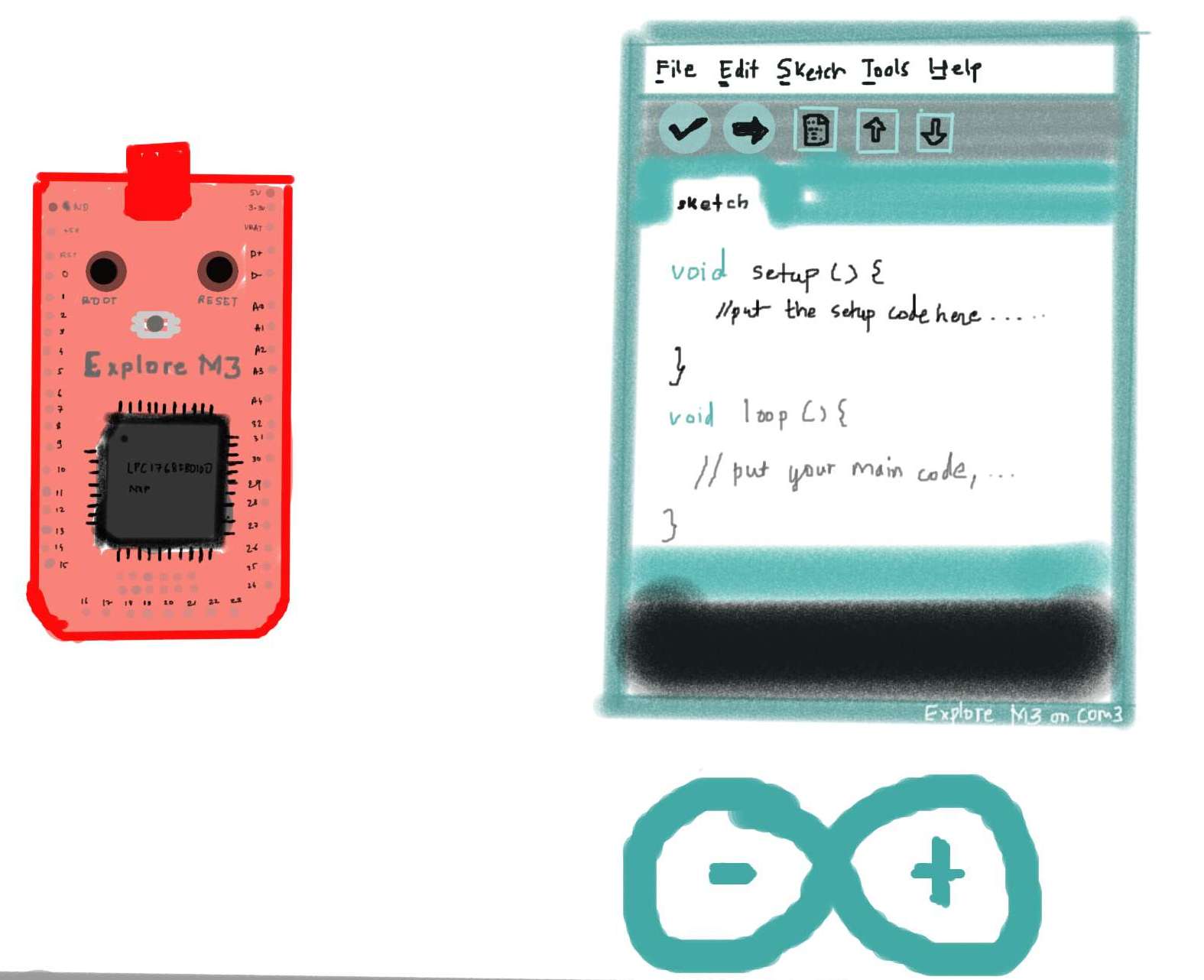
Contents
The Explore M3 Parts
The figure shows location of various parts on the board, which will be using during the setup. Look at the switches, the RGB led and the led on pin 13 in particular.
Using Board Manager
Download and install the Arduino IDE (1.6.12 preferred). Open the Arduino IDE and go to File-->Preferences and paste the below json URL into the Additional Board Manager URLs text box and hit OK.
https://raw.githubusercontent.com/ExploreEmbedded/Explore-M3/master/package_ExploreM3_index.json
Open the Board Manager from Tools-->Board-->Boards Manager. Scroll down and look for Explore-M3(32-bits ARM Cortex-M3) board. Click on the board entry and hit install.
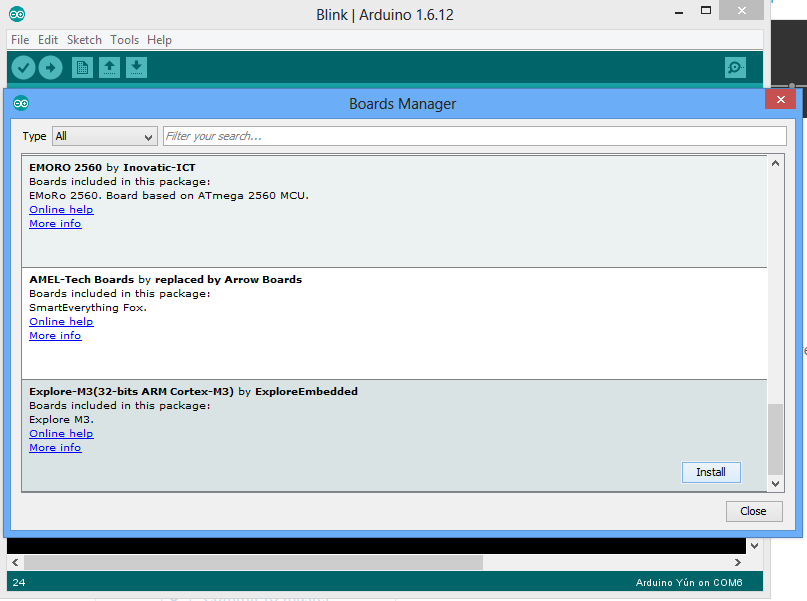
This will install the Explore-M3 board and the arm-none-eabi-gcc tool chain. Installation may take few minutes depending on the internet speed. Once the installation has completed, an Arduino-blue “INSTALLED” will appear next to the entry.
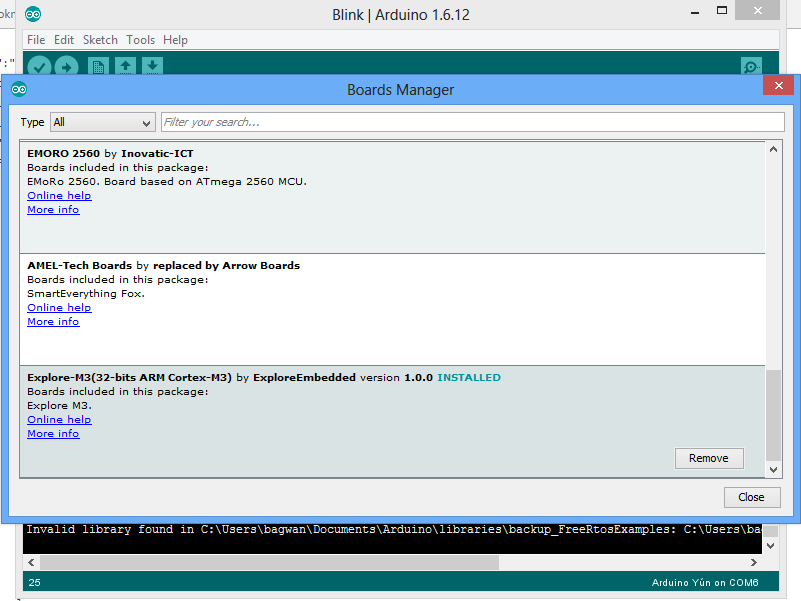
Now the Explore-M3 board will appear in the board list.
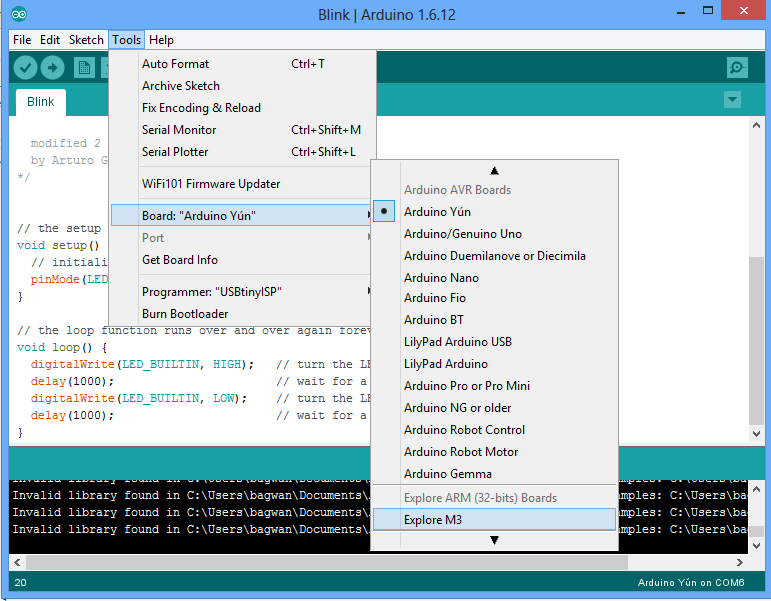
Driver installation
Windows
- Download and extract the contents of repository inside Arduino>Hardware directory of your Arduino Installation. Usually found under Documents>Arduino>Hardware. Verify that the directory structure looks like C:\Users\myPC\Documents\Arduino\hardware\Explore-M3. Note: This is for beta testers only, to get access to repo, please send an email with your github user-id
- Installing the Device Firmware Upgrade(DFU) Driver. This driver is used for programming the Explore M3.
- To upload a new program to Explore M3, put the board in programming mode by holding down the boot-loader switch, press and release the reset switch and then release the boot-loader switch. The RGB LED turns green indicating boot-loader mode.
- The board shows up as unknown device in device manager.
- Go to ..\Documents\Arduino\hardware\Explore-M3\tools\win and run the Zadig utility.
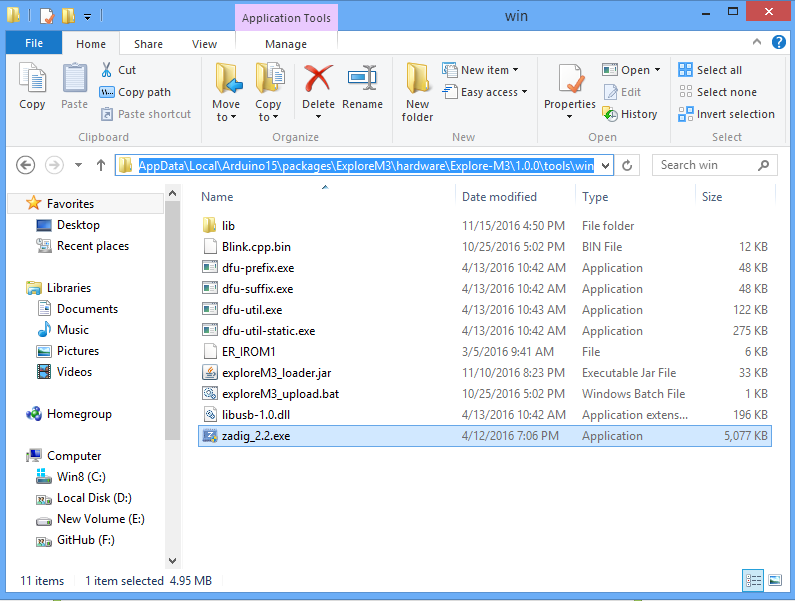
- Click on Options and select List All Devices

- Select the device as Explore M3 and assign WinUSB driver as shown
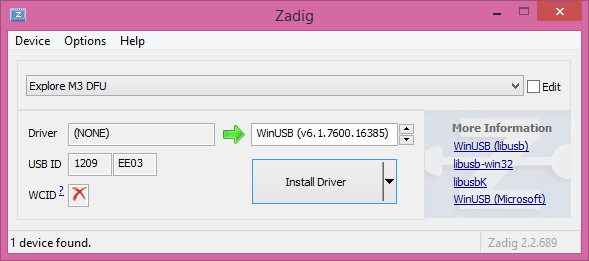
- Click on Install driver
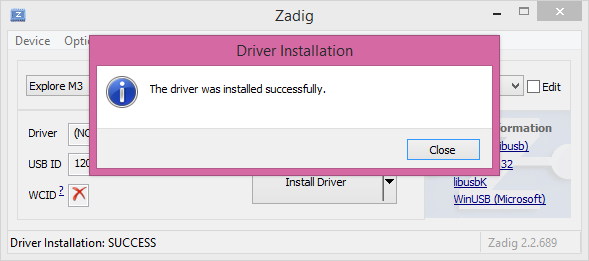
- Verify in the device Manager that the driver is successfully installed.
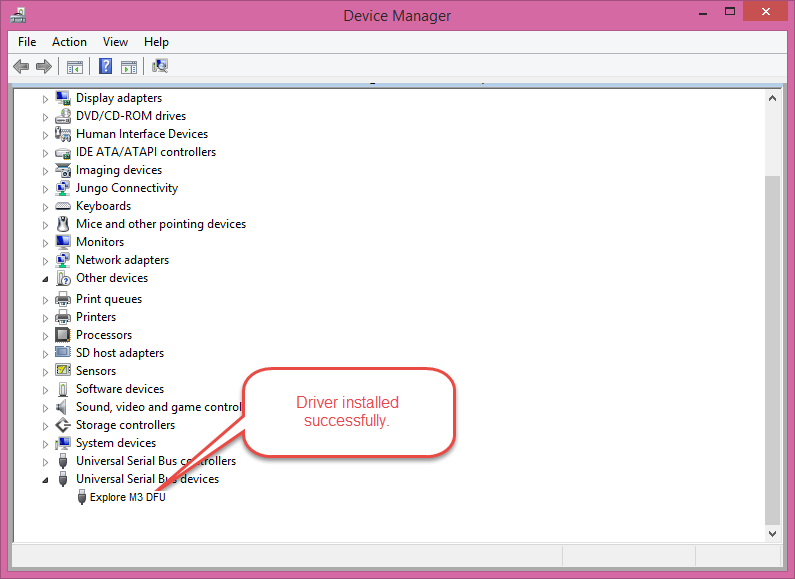
- Install Virtual COM driver ; This driver makes the same USB interface appear as virtual com port. The virtual COM code on the Arduino resides with every sketch that uses the Serial Class.
- Select the appropriate COM port in the Arduino IDE and open the terminal to observe the output.

Also notice that the RGB LEDs and the LED on pin 13 blink in a sequence.
Linux
This setup has been tested on Ubuntu 64 bit. If you should have any errors other linux flavours, do post in the comments.
One good thing I noticed, drivers are not required but only the device needs to be enabled. So lets get started.
- Download and install the Arduino IDE (1.6.5 preferred).
- Download and extract the contents of repository inside Arduino>Hardware directory of your Arduino Installation. Note: This is for beta testers only, to get access to repo, please send an email with your github user-id
- UDEV Rules: To enable Explore M3 as USB DFU and COM port run the install.sh file from /hardware/Explore-M3/tools/linux
- Connect the board to USB port now, put it in bootloader mode. Hold down the USB Boot switch and press reset and release the reset switch and than release the USB Boot Switch.
- Now for the glory, select the board as Explore M3, and upload the the test code

- Test code for reference
void setup() { // put your setup code here, to run once: Serial.begin(9600); pinMode(13,OUTPUT); } void loop() { // put your main code here, to run repeatedly: digitalWrite(13,0); rgbWriteAll(1,1,0); delay(200); rgbWriteAll(1,0,1); delay(200); rgbWriteAll(0,1,1); delay(200); digitalWrite(13,1); delay(200); Serial.println("Explore M3"); }
Notes
- Install any Arduino SAMD board to get the arm-eabi-gcc, if it is not installed on your computer.
- Give appropriate permissions when running the install.sh and other files.
- You may be required to give permissions to use virtual com port.
- Note that Explore M3 acts as Device Firmware Upgrade (DFU) and virtual COM port with the same USB interface.
MAC
[If you're a beta tester with access to MAC please get in touch, need your help to test it on MAC]

